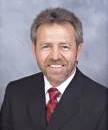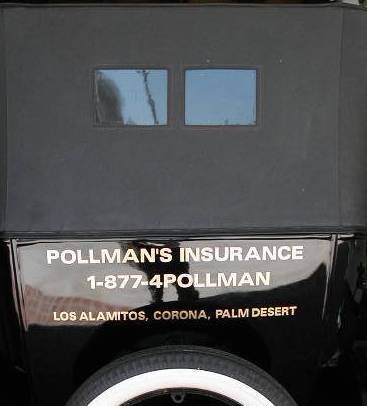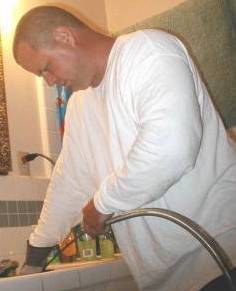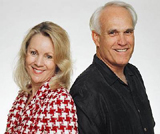Become A Hero To LB Animals With A $20 Membership. Info, Click Here.

Saving Lives Thru Spay/Neuter & Education



3853 Atlantic Ave.
Air Resources Bd. Proposes Rule Requiring Ships To Use (Oct. 24, 2005) -- Following its release of a draft study indicating that ships at berth account for a significant amount of the port-related toxic pollutants that increase the risk of cancer and other serious illnesses for residents of LB and beyond, staff of the CA Air Resources Board (CARB) has proposed that the agency adopt a rule requiring that vessels operating within 24 nautical miles (nm) of the CA coastline run their auxiliary engines -- used to power the ships while at berth -- on what it calls CARB staff says the rule, which it proposes become effective on Jan. 1, 2007, would "result in immediate, substantial reductions in emissions upon implementation in 2007. Specifically, for the nearly 80 percent of vessels currently using heavy fuel oil in their auxiliary engines, compliance with the proposed regulation will result in an estimated 75 percent reduction in diesel PM, 80 percent reduction in SOx, and 6 percent reduction in NOx."
As proposed in an official agency rulemaking, a process inviting public and industry comment followed by a hearing and voted action by CARB's governing board, vessels would either have to switch from using heavy fuel oil (so-called "bunker fuel") to marine distillate fuel while in port and while operating within 24 nm of the CA coastline, unless they already use complying distillate fuels or choose to use distillate fuels on a permanent basis. If operators choose the Alternative Compliance Plan, they must demonstrate the alternative emission control strategies will result in no greater emissions than would occur by complying with the fuel requirements.
The agency says bunker fuel contains high levels of sulfur, ash and nitrogen containing compounds and causes much higher emissions than marine distillate fuels. It says the proposed marine distillate fuels include marine gas oil (MGO) and marine diesel oil (MDO) which are "similar to the diesel fuel used by landside sources." The agency says a lower sulfur 0.1 percent marine gas oil is scheduled for implementation on January 1, 2010, subject to review. A CARB survey showed about 75% of vessels visiting CA use bunker fuel in their auxiliary engines while about 25% use marine distillate fuels.
Reaction is pending as we post. LBReport.com posts a link to the official CARB rulemaking document below.
CARB has scheduled a public hearing on the matter on December 8 at CA EPA's HQ in Sacramento...and the item is set for consideration at a two-day CARB meeting starting December 8 that may run into December 9 (or the item may be taken up on Dec. 9 instead of Dec. 8, check CARB's website).
CARB staff says the proposed regulation would apply to both U.S.-flagged and foreign-flagged vessels:
The proposed regulation is neither preempted under federal law, nor does it violate the
Commerce Clause. Federal authorization under section 209(e) of the Clean Air Act
(CAA) is required for regulating new nonroad engines and for requiring retrofits on
existing engines. Ocean-going vessel engines, by definition, fall within the category of
nonroad engines. However, no federal authorization is required for implementing in-use
operational requirements on existing marine vessels and their engines. The proposed
regulation is an in-use operational requirement because it does not apply to the
manufacturing process for an engine (i.e., new engine certifications), but only to the
emissions of engines installed on ocean-going vessels that operate in California waters.
Further, the proposed regulation does not conflict with the Ports and Waterways Safety
Act (PWSA) and U.S. Coast Guard regulations. As an even-handed regulation with
substantial benefits, the proposed regulation does not violate the Commerce Clause.
And federal and state cases support our authority to regulate both U.S. and foreign-flag
vessels within California waters. Therefore, federal law neither preempts the proposed
regulation, nor does the regulation violate the requirements of the Commerce Clause. In pertinent part, CARB staff writes:
Unless substantial additional control measures are implemented, port-related emissions
are expected to significantly increase as trade grows over the next 15 to 20 years.
While the movement of goods through California ports is a vital component of the
State’s overall economy and provides a key link to international trade, it is essential that
aggressive steps be taken to counter the projected emissions increases and ensure that
the port-related emissions are reduced to health protective levels.
As one of several steps being taken to reduce emissions from port activities, the Air
Resources Board (ARB) staff is proposing a regulation to reduce emissions from oceangoing
vessel auxiliary engines. Implementation of this regulation will be an important
and necessary step in the effort to improve the public health in communities near ports. As for adopting a statewide regulation instead of inviting local district rules -- a thorny issue that has prompted the local South Coast Air Quality Management District to oppose as weak and counter-productive a CARB-staff negotiated statewide Memorandum of Understanding with CA railroads, CARB staff writes:
The districts' authority notwithstanding, we believe it is prudent for the districts to
coordinate their efforts with those of ARB and have ARB to take the lead role in
implementing the ATCM. We believe this for several reasons. First, it is impractical for
many districts to enforce an ATCM against ocean-going vessels, many of which make
multiple visits to ports throughout California. Second, ARB has gained technical
expertise over several years of developing this regulation, which would require a
significant expenditure of district resources to replicate. Third, the districts are permitted
but not required to adopt and enforce an equally effective or more stringent ATCM. By
coordinating their efforts with ARB and having ARB take the primary lead in
implementing the ATCM statewide, the districts will have met their statutory obligations
under H&SC § 39666(d).
Equally important to the practical concerns are the international foreign commerce
concerns. Under the dormant Foreign Commerce Clause, regulations that interfere with
a nation’s ability to "speak with one voice when regulating commercial relations with
foreign governments," may be held invalid. Having a patchwork of district regulations
different from ARB’s proposal, may frustrate the efficient execution of the nation’s
foreign policy to speak with one voice. Thus, it would be in California's best interests to
coordinate statewide efforts so that foreign-flag and U.S.-flag vessels visiting California
ports only need to understand and meet one set of statewide regulations.
The rule would potentially encompass both cargo ships and cruise ships, and some tankers.
Passenger cruise vessels, and some tankers, use a different engine configuration which
is referred to as "diesel-electric." These vessels use large diesel generator sets to
provide electrical power for both propulsion and ship-board electricity. For the purposes
of the proposed regulation, these large diesel generator sets are included in the
definition of "auxiliary engines."
What are the exposures and potential heath risks from ocean-going vessel
auxiliary engine emissions? CARB staff writes:
Because analytical tools to distinguish between ambient diesel PM emissions from
vessel auxiliary engines and that from other sources of diesel PM do not exist, we
cannot measure the actual exposures to emissions from auxiliary engines. However,
modeling tools can be used to estimate potential exposures. To investigate the
potential risks from exposures to the emissions from auxiliary engines, ARB staff used
dispersion modeling to estimate the ambient concentration of diesel PM that results
from the operation of ocean-going vessel auxiliary engines that visit the Port of Los
Angeles (POLA) and the Port of Long Beach (POLB). The study area was a 20-mile by
20-mile grid centered on POLA and POLB.
The activities of vessel auxiliary engines resulted in significant cancer risk and other PM
related health impacts on the nearby residential areas. Figure ES-2 shows the
estimated cancer risk isopleths for diesel PM emissions from vessel auxiliary engines
(during transiting, maneuvering, and hotelling) at the Ports of Los Angeles and
Long Beach superimposed on a map that covers the ports and the nearby communities. ARB estimated the area in which the cancer risks are predicted to exceed 100 in a
million to be about 13,500 acres with an exposed population of about 225,000. For the
cancer risk level over 200 in a million, the impacted area is estimated to be about 2,260
acres, with an exposed population of about 48,000 people. Overall, about 99.5 percent
of the study area (excluding port property and the surrounding ocean area) has an
estimated cancer risk level of over 10 in a million due to auxiliary engine emissions. We
estimate that about 2 million people live in the study area. ARB staff believes that the
results from this analysis provide quantitative results for exposures around the Ports of
Los Angeles and Long Beach and indicate that elevated risks also occur at other ports
in California...
ARB staff also estimated the potential non-cancer impacts associated with exposure to
diesel PM from ocean-going vessel auxiliary engines. The non-cancer health effects
evaluated include premature death, asthma attacks, work loss days, and minor
restricted activity days due to diesel PM emissions from auxiliary engines. Based on
the analysis, staff estimates that the average number of cases statewide per year that
would be expected from exposure to the 2004 ocean-going vessel diesel PM emission
levels are as follows:
The following Q & A text is included in CARB's proposed rulemaking. [We boldfaced the questions for more easy reference]:
Is the proposal technically feasible?
Yes. Based upon ARB staff’s analysis and discussions with numerous stakeholders, including the engine manufacturers, staff believes that the requirements of the proposed regulation are technically feasible. Under the proposal, vessel operators may comply by using cleaner-burning marine distillate fuels in their auxiliary engines instead of heavy
fuel oils, or implementing alternative emission control strategies. For vessel operators
that comply through the use of cleaner-burning fuels, they will need to ensure that they
are using marine distillate fuels prior to entering the 24 nm boundary. ARB staff found
that vessel operators already switch to marine distillate fuels prior to certain scheduled
maintenance operations, and many also routinely switch to these fuels for air quality
reasons in California. Discussions with the manufacturers also indicated that these
engines can operate on marine distillate fuels provided certain precautions are followed,
such as performing fuel switches according to recommended procedures. Beginning
January 1, 2010, the proposal specifies a lower 0.1 percent sulfur marine distillate fuel.
This standard will be subject to a feasibility evaluation prior to implementation to fully
investigate the availability of this fuel and if any technical issues exist...
What businesses and public agencies will be affected by the proposed
regulation?
The proposed regulation would impact foreign and domestic businesses that own or operate large ocean-going vessels. This would include ocean shipping companies and
passenger cruise vessel operators.
We do not expect significant impacts on "downstream" companies such as importers or
exporters of goods, since the added costs imposed by the proposal are not expected to
result in significant adverse impacts to vessel owners or operators. Similarly, we do not
expect adverse impacts on California ports because we do not believe the added cost of
the proposed regulation is great enough to induce vessel operators to divert cargos to
ports outside California.
We do not predict any significant impact on public agencies. With the exception of
military vessels, which are exempted from the requirements of the proposed regulation,
public agencies in California generally do not operate ocean going vessels as defined in
the proposal...
What are the health and environmental impacts of the proposed
regulation?
Upon implementation in 2007, the proposed regulation will result in immediate and significant reductions in emissions of diesel PM, NOx, SOx, and “secondarily” formed particulate matter. Specifically, considering only the directly emitted emissions (not
secondarily formed PM), the proposed regulation will result in estimated statewide
emission reductions of 2.7 TPD of diesel PM, 1.9 TPD of NOx, and 22 TPD of SOx in
2007. For perspective, the proposal would result in an estimated 75 percent reduction
in diesel PM, 80 percent reduction in SOx, and a 6 percent reduction NOx from an
engine that previously used typical heavy fuel oil. Beginning in 2010, the 0.1 percent
sulfur limit will result in an additional 10 percent reduction in diesel PM. The estimated
reductions for diesel PM, NOx and SOx, as shown in Table ES-2, reflect the use of the
cleaner marine distillate fuels specified in the proposed regulation, although alternative
control technologies could also be used to achieve equivalent reductions. The
estimates do not reflect participation in the "noncompliance fee provision" in the
proposal that allow shippers to pay a fee in lieu of compliance because we cannot
predict the rate of participation. However, we would expect that the use of
noncompliance fees would be very limited, and whatever fees that are generated would
be used to achieve emission reduction around the ports...
The emission reductions shown for 2007 reflect the initial implementation of the fuel
specifications in the proposal, assuming that the average sulfur content of the fuel will
be 0.5 percent. The 2010 and later reductions reflect the use of 0.1 percent sulfur
marine gas oil, which is scheduled to be implemented in 2010 subject to the results of a
feasibility evaluation required under the proposed regulation...
Significant air quality benefits are expected from the proposed regulation. The
reductions in diesel PM, NOx and SOx will help improve regional ambient air quality
levels of PM and ozone. We also anticipate significant health benefits due to reduced
mortality, incidences of cancer, PM related cardiovascular effects, chronic bronchitis,
asthma, and hospital admissions for pneumonia and asthma-related conditions. These
directly emitted diesel PM reductions are expected to reduce the number of premature
deaths and other non-cancer health effects from air pollution in California. Staff
estimates that the implementation of this regulation will avoid between 2007 and 2020
years approximately:
With respect to potential cancer risk, ARB staff believes there will be significant
reductions in exposures and potential cancer risks to residents that live near ports in
California. For example, based on an analysis of the predicted 2008 and 2015 ambient
diesel PM levels near the POLA and POLB, we estimate that in 2008 there will be a
70 percent reduction in the population-weighted average risk relative to the predicted
risk levels in 2008 from ocean-going vessel auxiliary engine diesel PM emissions and a
78 percent reduction in 2015.
ARB staff has concluded that no significant adverse environmental impacts will occur
from implementation of the proposed regulation. There will be no increase in emissions
at any of the locations due to this proposed regulation. The locations experiencing the
greatest emission reductions will be those areas nearest to the ports. What are the economic impacts of the proposed regulation? The proposed regulation would directly impact businesses that operate large oceangoing vessels. These businesses would be required to reduce their emissions through the use of marine distillate fuels, or other equally effective emission control strategies. To estimate the costs of the proposed regulation, we assume compliance will occur through the use of marine distillate fuels. We also estimate that about ten percent of vessels will need to make some modifications to be able to use the specified fuels. For example, some vessels would add an additional fuel tank dedicated for the use of marine distillate fuels. We estimate the total added fuel cost of the proposed regulation to be about $34 million annually, and about $38 million in 2010 when the lower sulfur fuel standard is scheduled to be implemented. We also estimate total capital costs of about $11 to $18 million for vessel modifications. The total annual cost and cost-effectiveness of the proposed regulation is estimated...by assigning all of the cost of the proposed regulation to each pollutant individually. Using this approach, the diesel PM cost-effectiveness would be about $26-27 per pound of diesel PM reduced. This estimate does not account for the fact that the proposed regulation would also reduce emissions of NOx and SOx. If half of the compliance costs are attributed to diesel PM reductions, and half to NOx and SOx reductions, the diesel PM cost-effectiveness would be about $13-14 per pound. Using either approach, these results compare favorably with the cost-effectiveness of other diesel PM regulations adopted by the Board... We estimate that affected businesses will be able to absorb the costs of the proposed regulation with no significant adverse impacts on their profitability. This finding is based on the staff’s analysis of the estimated change in “return on owner’s equity” (ROE). The analysis found that the overall change in ROE for typical businesses was less than one percent. Generally, a decline of more than ten percent in ROE suggests a significant impact on profitability. In addition, the added costs of the proposed regulation are a small fraction of the overall operating costs of these large vessels. Another way to analyze the costs of the proposed regulation is to assume all of the added costs are passed on to the customer. Using this type of analysis, we do not expect significant impacts on the customers of oceangoing vessel operators. For example, we estimate that the added costs of the proposed regulation would add about a dollar per container for importers or exporters shipping containerized goods overseas. We estimate that this represents less than one percent of the shipping cost. For passenger cruise ships, we estimate the added cost of the proposed regulation for a typical Los Angeles to Mexico cruise would be about $8 per passenger, representing about a 2 percent fare increase. Since the proposal would not significantly alter the profitability of most businesses, we
do not expect a noticeable change in employment, business creation, elimination, or
expansion, and business competitiveness in California. We also found no significant
adverse economic impacts on any local or State agencies...
To view the rulemaking document in full (pdf form), click Rulemaking to Consider the Adoption of Proposed Regulations to Reduce Emissions from Auxiliary Diesel Engines and Diesel-Electric Engines Operated on Ocean-Going Vessels Within California Waters and 24 Nautical Miles of the California Baseline".
Contact us: mail@LBReport.com |
     
|